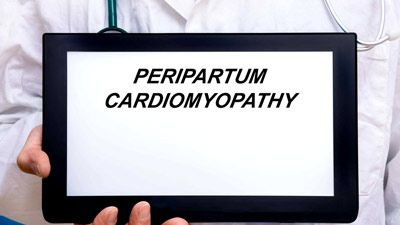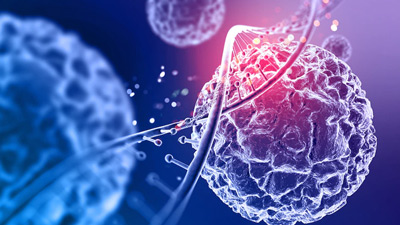C Section
There are different modes of delivering a baby and c-section or cesarean delivery is one of them. This process is conducted through surgery by creating an incision in the abdomen and uterus. From pregnancy complications to avoiding painful normal delivery to giving birth at a particular date & time, there are so many reasons why couples opt for a c-section. While there may be numerous benefits of this procedure, certain risks are also there. In this section, you would come to know more about c-section.
What is c-section?
C Section- This process is where the baby is taken out through the mother’s abdomen and is usually done when an unusual problem occurs and the mother is not able to deliver the natural way. There could be many reasons for this problem and the surgery is relatively safe for the mother and her baby. However, such a surgery could always involve many risks and we have attempted to address all such issues that could stand as a threatening factor during such a surgery. Also, find out why and under what circumstances do you require a c-section. C-section deliveries are safer only after 39 weeks of pregnancy. Only in unavoidable circumstances that requires delivery before 39 weeks, this surgery can be performed.
When is C-Section Done?
There are certain situations wherein your doctor or healthcare provider may recommend you to deliver through c-section instead of vaginal delivery. All of them are listed here:
Stalled Labour: If your labour is not progressing and despite having strong uterine contractions for many hours, you are not able to deliver.
You are carrying multiple babies: If you are carrying twins or triplets, and the leading baby is not in the upright position to come out, the doctor would recommend cesarean delivery. This reduces the risk of complications or harm to the babies.
Abnormal positioning of the baby: If your baby is not in the right position to come out through vaginal delivery. For safe normal delivery, the head of the baby should enter the birth canal first. In some cases, feet breech first or the baby is positioned transversely, then c-section is preferred.
Distressed baby: If the heartbeat of the baby is fluctuating, doctors prefer c-section to deliver safely.
Problem with placenta: If your placenta is covering the cervix opening from where the baby comes out, normal delivery is difficult and so, c-section is preferred.
Prolapsed umbilical cord: If the umbilical cord comes out before the baby, cesarean is recommended.
C-section in the past: If you have had a c-section delivery previously, the next time may also be c-section if the doctor advises so. Mostly, VBAC(vaginal birth after cesarean) can be performed.
Severe health condition: If the mother is suffering from any severe illness such as heart disease or a brain disease, doctors don’t like to take risks with vaginal birth.
Painless delivery- It is known to one and all that vaginal delivery is very painful. Some women prefer c-section to avoid painful labour and smooth delivery, particularly with their first child.
Planned delivery- If you have selected a birth date for your baby or you want him to arrive on a specific day, c-section is done.
There might be various reasons why one might go for this but the risks involved in the surgery shouldn’t be ignored. Women who are planning to have multiple children should avoid c-section as much as possible. The reason being the increased risk of heavy bleeding, placental problems that may even lead to uterus removal. So, think wisely. Read ahead to know the risks associated with c-section.
Risks of C-section
Eventually this is a surgical procedure that comes with many risks. We have explained all the risks related to C-section in this article.
Risks to the baby
Surgical injury: This is rare but possibilities are there that an accidental nick to the baby may occur while performing the surgery.
Breathing problems: There are chances that a baby born through cesarean delivery may develop a breathing problem named transient tachypnea where he/she will breath faster in the initial days of birth.
Risks to the mother
Infection: Since the surgery is performed by creating an incision, many women develop infection at the endometritis.
Wound infection: Many women suffer from incision infection after the surgery. Some women are at a greater risk because they underwent c-section due to unavoidable emergency situations.
Surgical injury: This is rare but if the c-section was operated by a less-experienced doctor, it might be possible. Injuries to the bowel or bladder might occur and to treat it, additional surgery would be required.
Postpartum hemorrhage: This is condition of heavy bleeding during surgery and after delivery.
Blood clotting: Increased risk of blood clotting inside a vein is associated with c-section delivery. Deep vein thrombosis is the term for this condition. Furthermore, clotting can reach your lungs, blocking blood flow. This can be life-threatening for some women.
Future pregnancy risk: There are different health risks related to c-section whereas no risks are there with vaginal birth. C-section can affect your future pregnancies by causing placenta accreta and uterine rupture. This is because of the scar line that the previous c-section gave you.
Recovering from a caesarean
Since c-section is a surgical procedure, its recovery period is more than normal delivery or vaginal birth. While women get discharged the same day after normal delivery, they are required to stay in the hospital for a couple of days after cesarean delivery. They are kept under doctor supervision to see if any infection or issue hasn’t arisen after delivery.
Also, due to incision, the mother may feel pain and discomfort around the abdominal area. This may last from a few days to few weeks or even months depending upon the surgery. You may need to take painkillers to get over the pain.
After you go home, you need to take utmost rest to allow the body to heal from the surgery. Do not do activities that require hard work and stress. It is better to stay at home and avoid travelling until your doctor advises you to proceed.
Go for postnatal checkups from time to time. This would track your recovery and ward off risks associated with c-section deliveries.
References
https://www.mayoclinic.org/tests-procedures/c-section/about/pac-20393655
https://www.healthline.com/health/c-section
https://www.nhs.uk/conditions/caesarean-section/
Related Articles
-
6 Tips To Reduce Tummy After C-Section Naturally
Reducing tummy fat after a C-section is a gradual process that requires patience, consistency, and self-care.
-
From Prenatal Care To Postpartum Depression: Terms You Must Know During Pregnancy
Many new phrases and expressions will be introduced to you during your pregnancy. It is important to learn them.
-
Risk Of A Caesarean Delivery In Expecting Mothers: Expert Weighs In The Tips To Reduce It
Several evidence-based strategies aimed at hospitals and doctors can aid in the reduction of C-sections in low-risk women.
-
Why There’s An Alarming Surge In C-Section Childbirth In India
An important thing to recognise is that childbirth is a natural biological process that most women are capable of undergoing. Read ahead to know more.
-
5 Myths Around C-Section Busted By Gynaecologist
If you are exploring baby delivery options, read these myths and facts about c-section delivery before making a choice.
-
How To Take Care Of Yourself After Caesarean Birth, Doctor Verifies
A caesarean section is a surgical procedure where a baby is born through a cut made in the mother’s abdominal wall and uterus
-
How To Quickly Recover From C-Section?
You can recovery from surgery of c-section faster through this process, know tips by expert.
-
Normal Delivery Vs Cesarean: Check Out The Pros And Cons By Dr Praveena Shenoi
Both normal and cesarean deliveries have their own set of advantages and disadvantages. Here are some tips by a gynaecologist and obstetrician.
-
Here Are 5 Myths About Cesarean Delivery
Women often have many questions about C-section delivery. Hence, it is important that they know about these myths fully and then take some decision.
-
How To Get Rid Of Swollen Abdominal Muscles After C-Section?
Cesarean section indications and contraindications: Reduce the swollen upper abdomen after c section in these ways.















